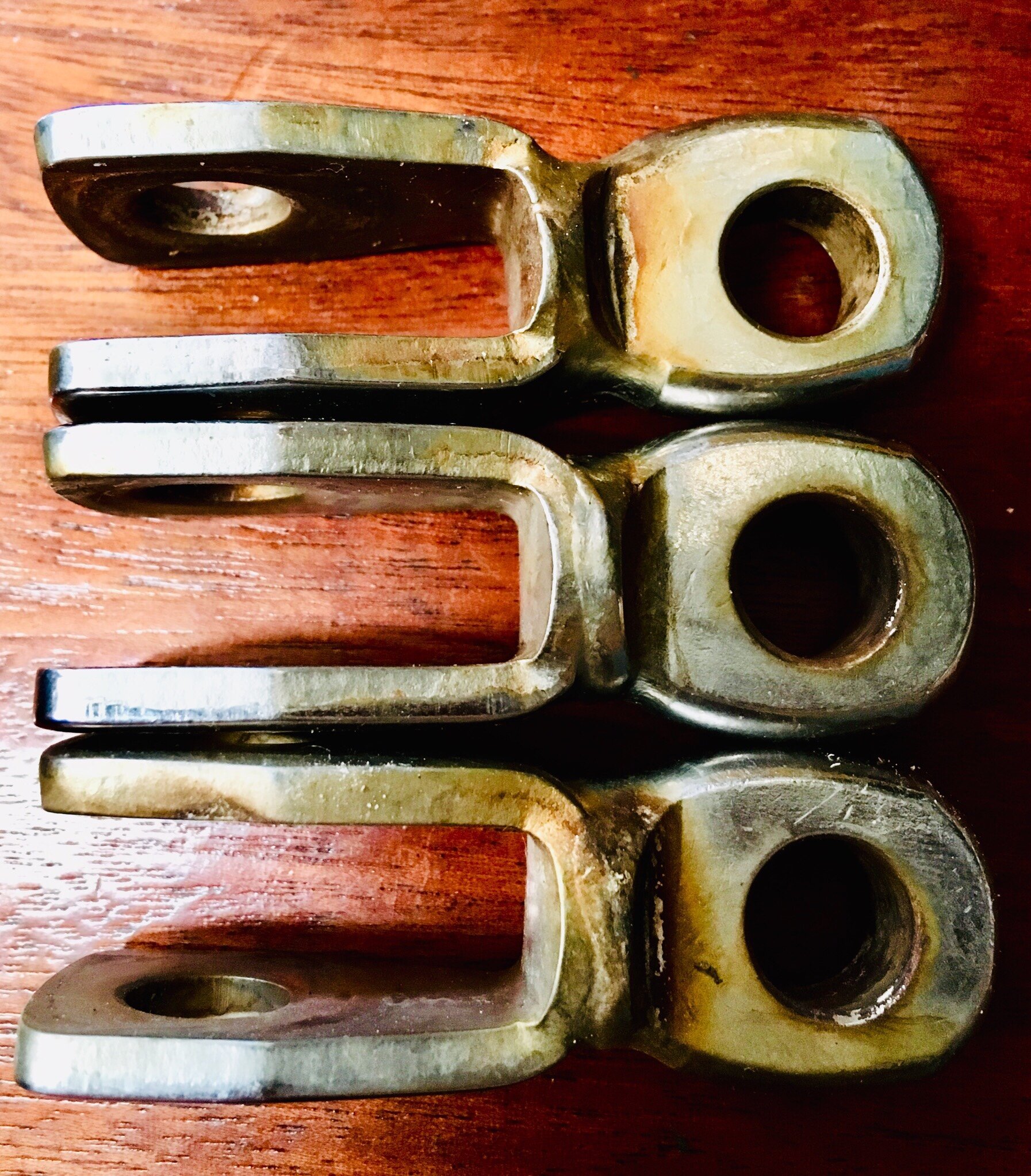Having synthetic standing rigging means that our stays are immune to corrosion problems. Most of the end fittings that connect our stay to the mast are bronze, but these three toggles to the inner forestay area were all stainless steel.
Can you spot the crevice corrosion?
I spotted this flaw in the Azores right before we were leaving during my routine aloft inspection of the rig. We decided to go because in the Azores, everything is Metric and trying to get Imperial sizes there is a nightmare!
The corrosion was in the length of the metal, not across it. This meant that it was weakened but not completely broken.
We sailed on with the stress on mind that our toggles could fail and sailed about 1800 miles to reach mainland Portugal, where we soon hopped on a plane to fly back to the states to visit family.
The plan was to bring easy to buy bronze toggles back with us from the States rather than to mess with all the red tape to import “yacht parts” into Portugal.



